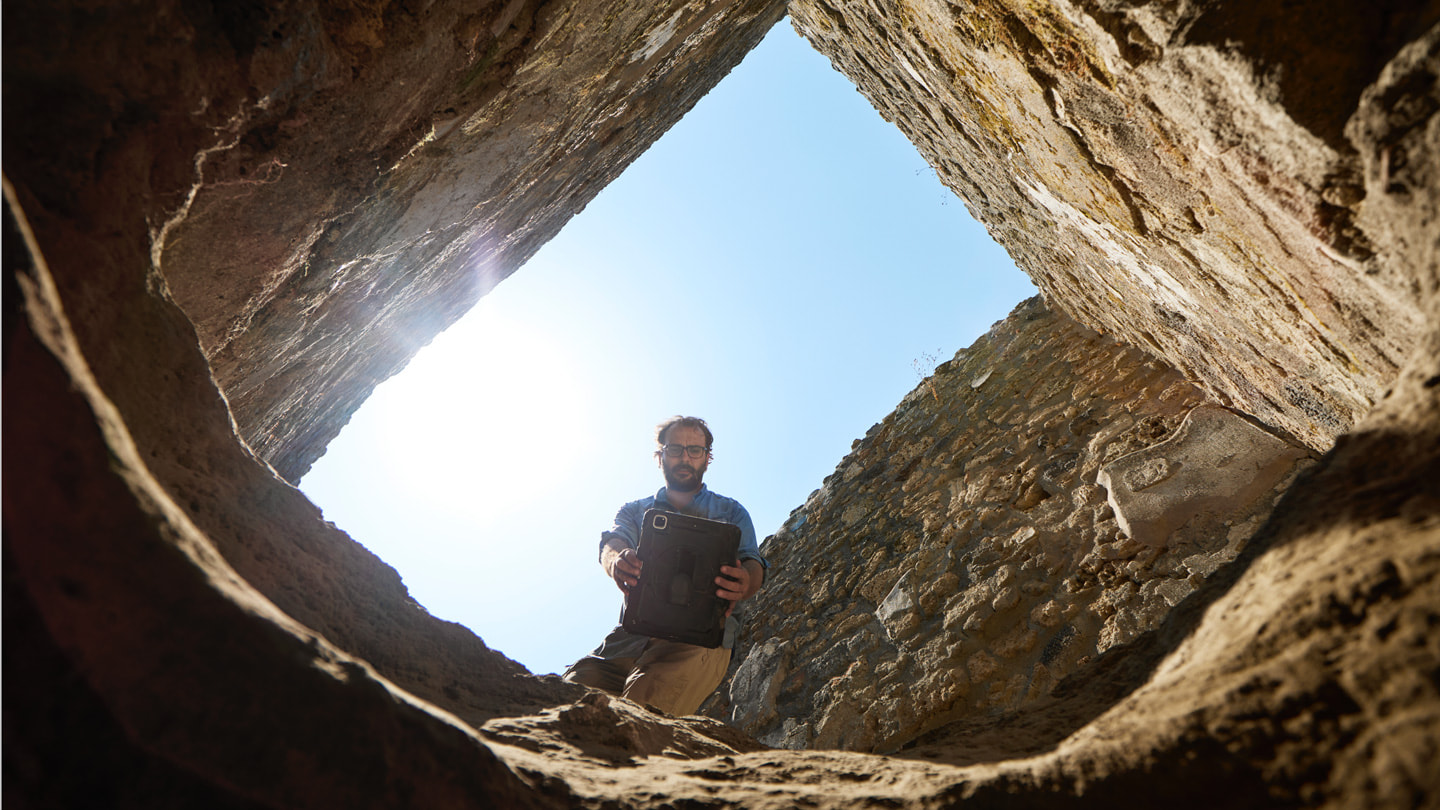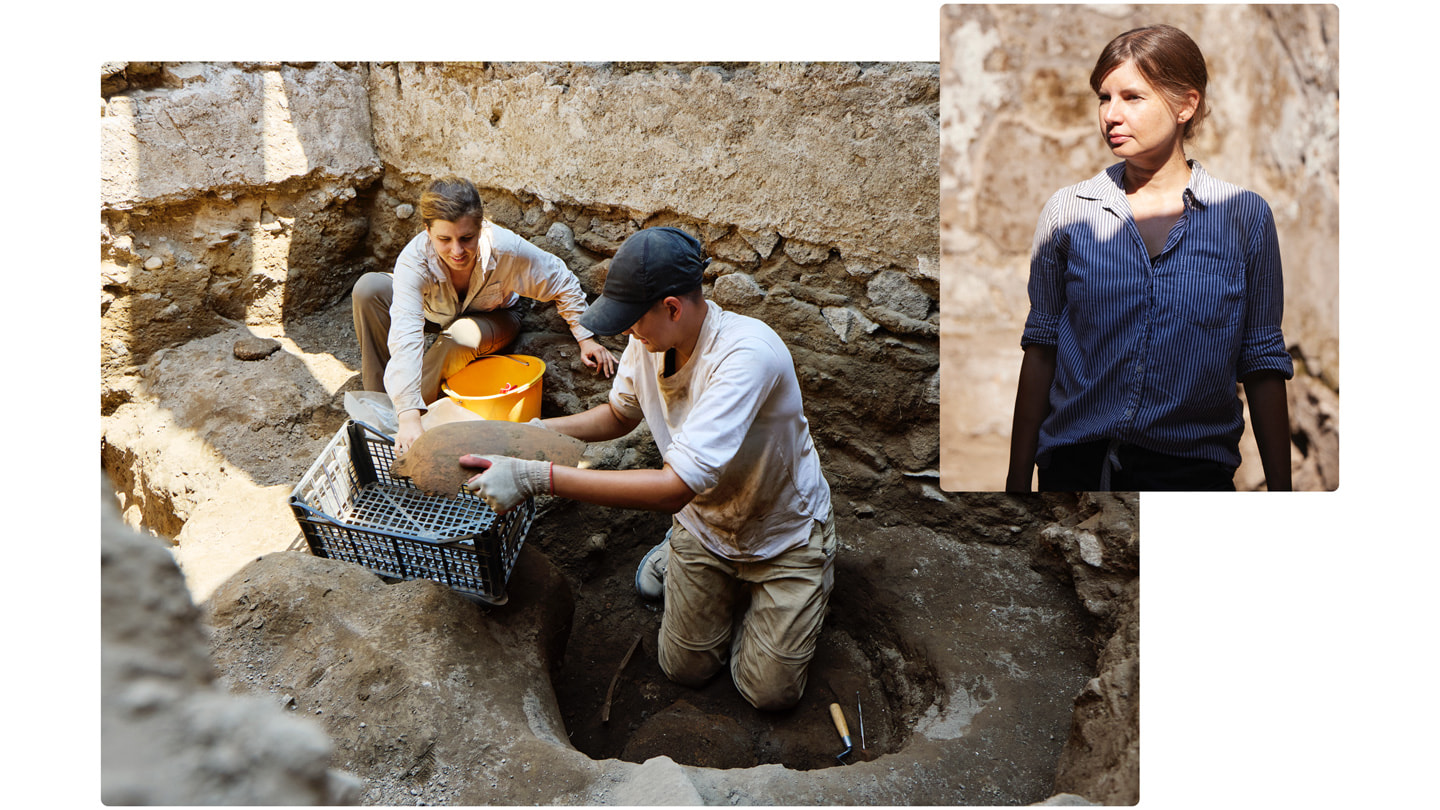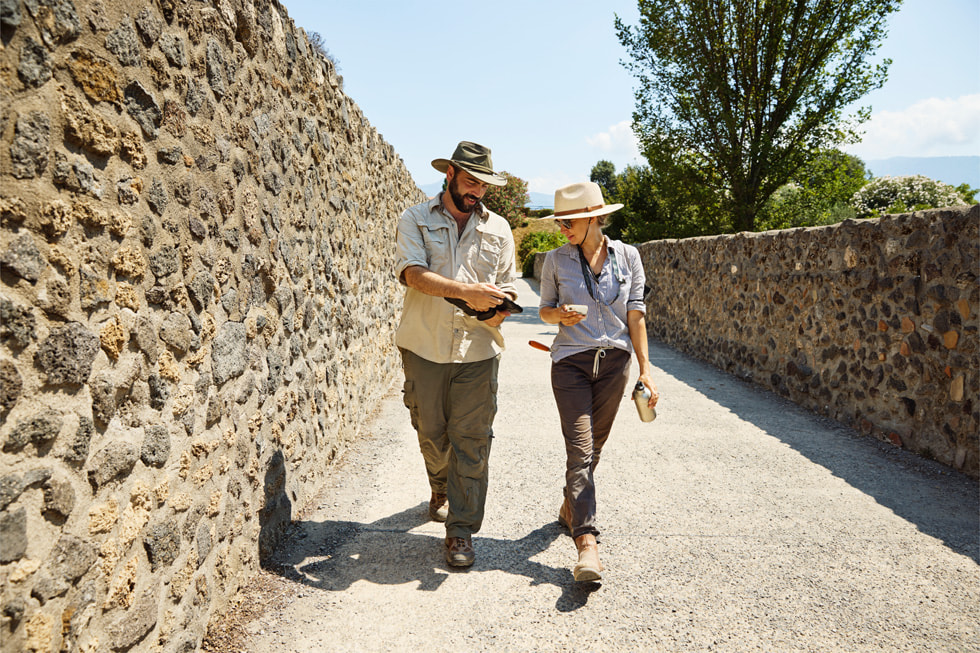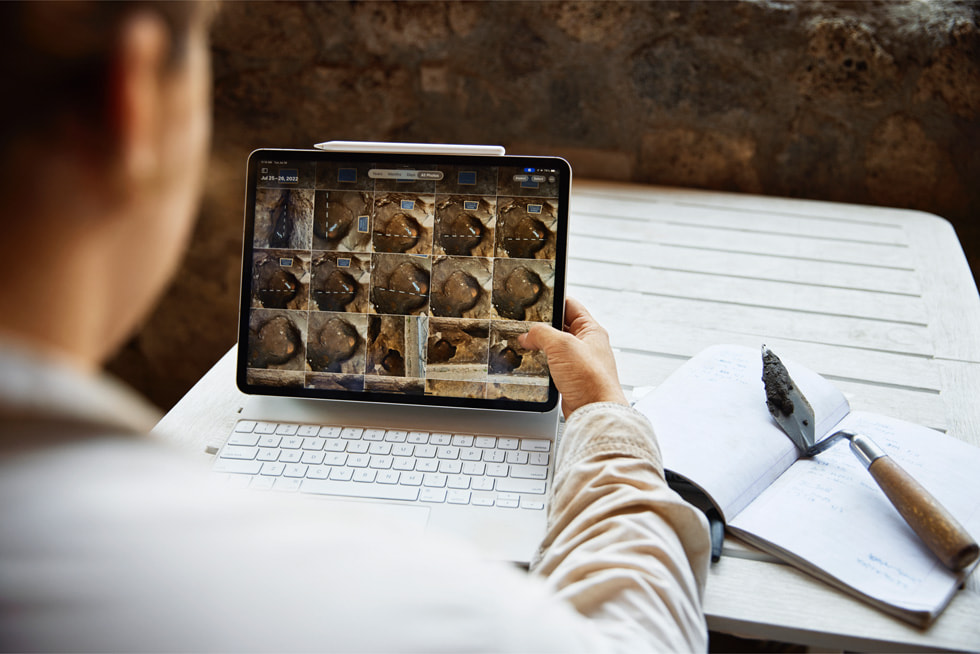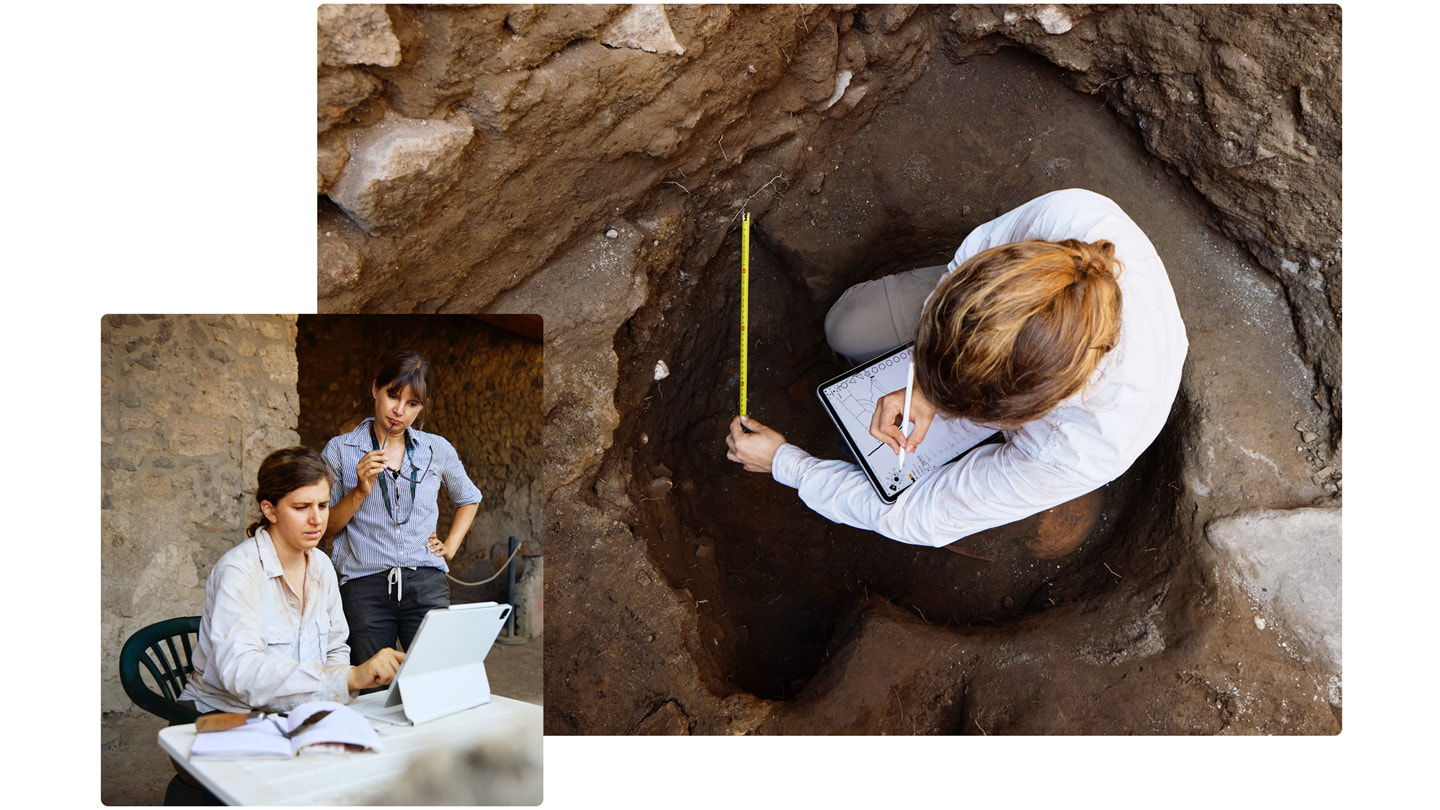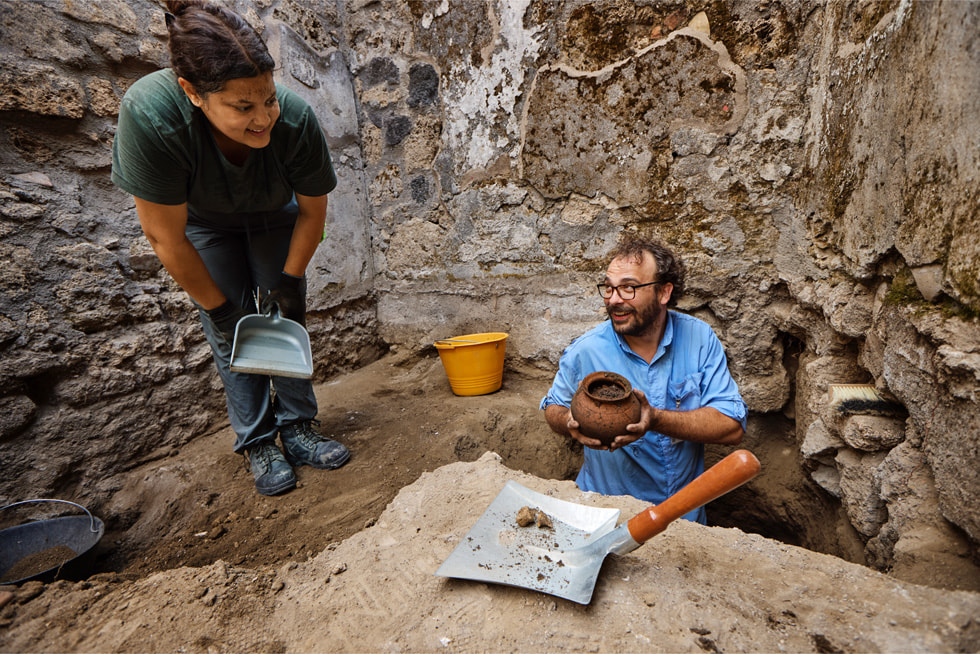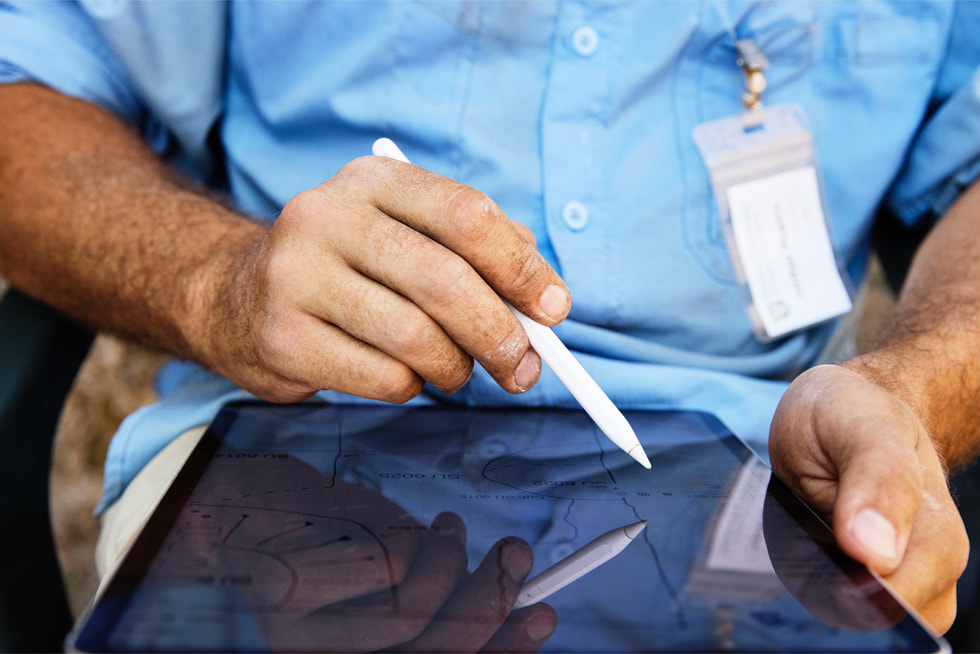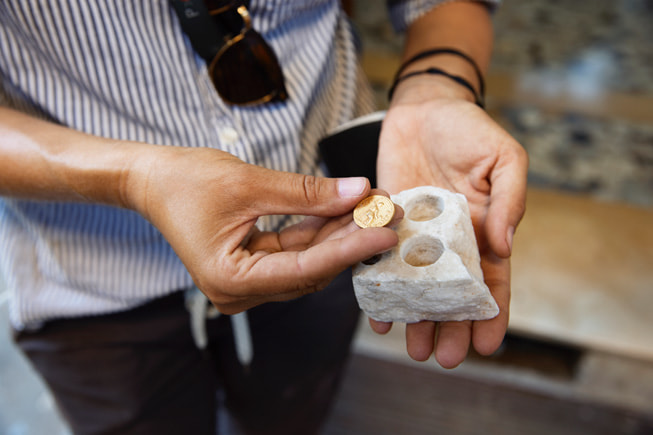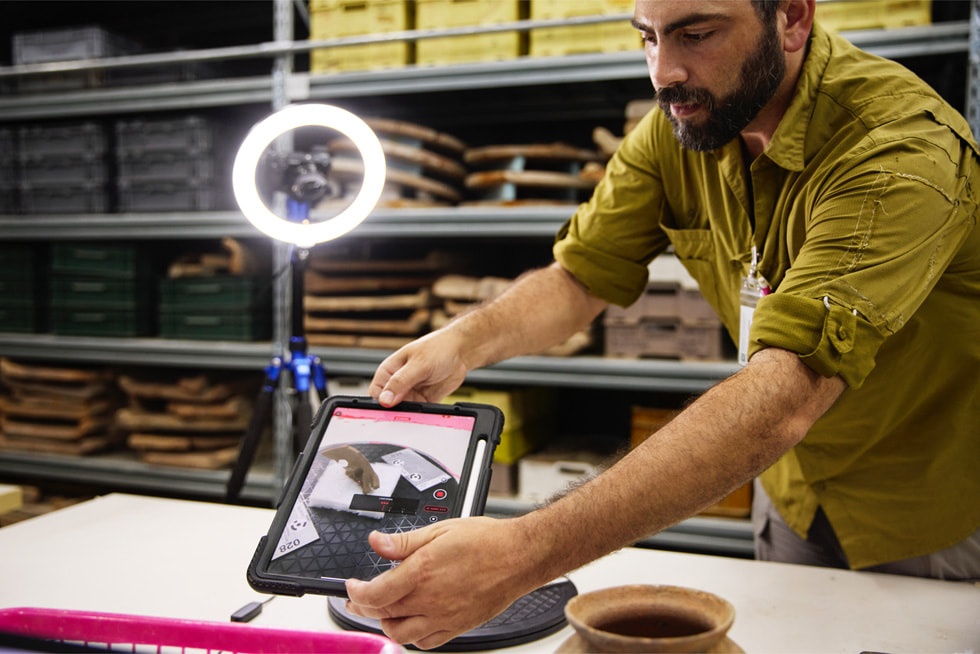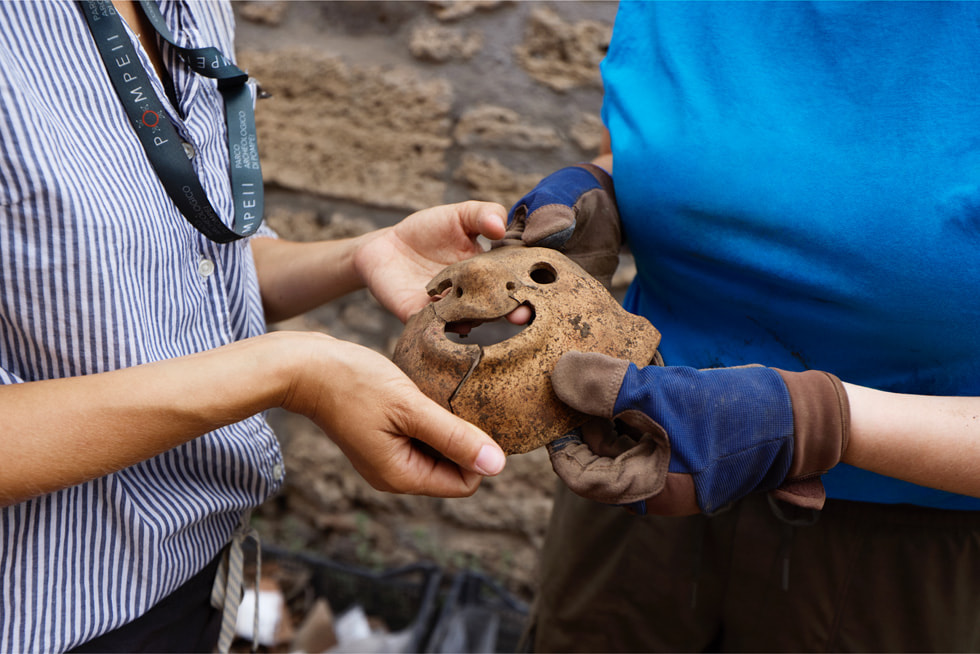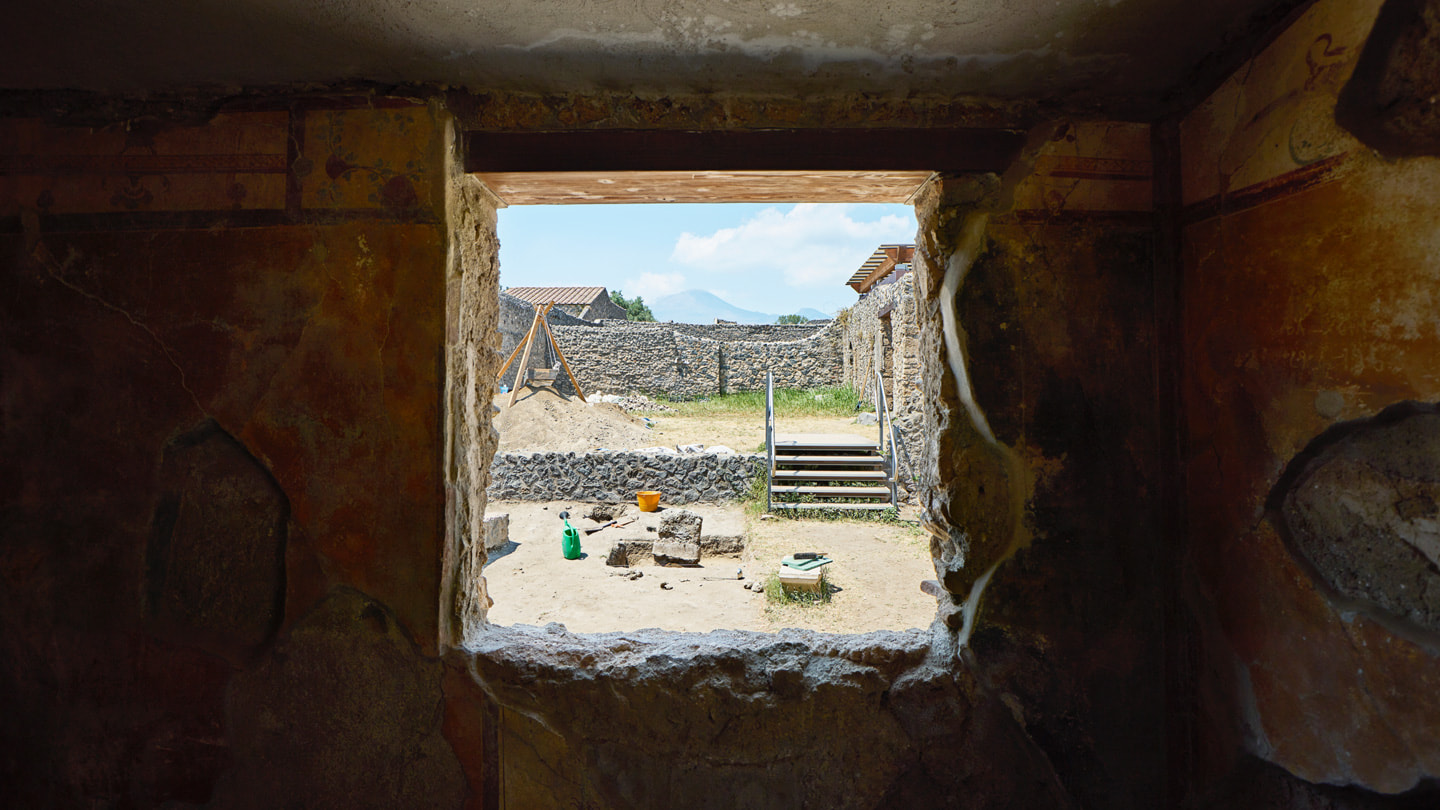FEATURE
27 September 2022
iPad Pro is revolutionizing how archaeologists preserve the ancient history of Pompeii
It’s Tuesday morning of the final week of the archaeology team’s excavation at Pompeii, and everyone is buzzing.
The day before, a trove of artifacts was discovered inside a pit in an ancient Roman kitchen, and Tulane University professor Dr. Allison Emmerson, who is leading the dig, believes the team has not yet reached the bottom and all of its contents. Each new discovery provides a clue to unlocking the story behind the site and the people who used it.
Amid the tools used by archaeologists for centuries — trowels, buckets, brushes, and pickaxes — there’s a new piece of equipment: iPad Pro.
“iPad is the perfect archaeology machine,” says Dr. Emmerson, who was part of the team that pioneered its use to record data on archaeological digs in 2010. She credits iPad with revolutionizing the field.
This summer, Dr. Emmerson — whose work focuses on ancient Roman communities that have largely been excluded from study, such as women, the poor, and the enslaved — has made iPad Pro the center of her team’s workflow. She believes it will once again reshape the field, thanks to capabilities like enhanced processing speed and battery life, the LiDAR Scanner, and the versatility of Apple Pencil.
“Archaeological excavation is a destructive process — once a location has been dug, that work can never be repeated — so our most essential concern is thorough recording of all relevant data so that future researchers can ‘reconstruct the site,’” says Emmerson. “iPad Pro allows us to collect data faster, more accurately, and more securely than any other tool, and has the processing power we need to aggregate that information and present it in a way no one has before.”
Mount Vesuvius erupted in the fall of 79 C.E. (Common Era, also known as A.D.), burying the city of Pompeii in volcanic material. Seventeen years earlier, a major earthquake severely damaged the city, and some archaeologists believe that in between those two events, Pompeii was a city in decline.
For this year’s five-week dig, called the Tulane University Pompeii I.14 Project after the building’s location on the city grid, Dr. Emmerson brought together archaeologists and students from schools on both sides of the Atlantic to excavate a commercial building believed to be a restaurant dating to the second or third century B.C.E. (before the Common Era, also known as B.C.).
The group also includes a tech team co-led by Dr. Alex Elvis Badillo, a digital archaeologist Dr. Emmerson has been working with for the last year to pioneer new techniques for recording and publishing archaeological findings.
This summer, Dr. Badillo and Dr. Emmerson had two technology goals: to implement a completely paperless workflow using a single device, and to create an online database that would allow others to virtually “re-excavate” the site. Dr. Badillo knew that iPad Pro with Apple Pencil would serve as the foundation for their work, and selected Esri’s suite of tools, as well as Concepts by TopHatch, as additional apps.
This transformed the dig, especially for the team’s two excavation supervisors, Dr. Jordan Rogers, who teaches at Carleton College, and Mary-Evelyn Farrior, who is currently completing her PhD at Columbia University. They each oversaw a separate area of the site, called a trench, and were responsible for directing the undergraduate excavators and recording the majority of data collected.
“The way I have always recorded on past digs was on paper with pencils or pens,” says Rogers. “And when you drew something, you did it on graph paper, and used string and levels to measure where things were located. Photos were taken on separate cameras that you had to upload manually once you got back home. Everything was in a different place, and every night involved many hours transferring your day’s notes onto your computer.”
Now, as Dr. Rogers and his trench team dig further down into the kitchen pit that yielded so many surprises the day before, the only recording tool he holds is iPad Pro with Apple Pencil.
“Initially, I was a little apprehensive because I’d never used iPad before,” says Rogers. “But the learning curve was so quick, and it’s really incredible how much more effective and efficient it’s made the process of data capture, especially with Apple Pencil. I also feel a lot better not having to worry I’m going to lose a sheet of paper — and there used to be so many sheets of paper.”
Dr. Badillo customized Esri’s ArcGIS Survey123 app so that the archaeologists could input more than 50 fields of distinct information on their iPad Pro, including attachments like photos and sketches.
“I’ve used iPad in the field twice before this dig,” says Farrior. “But this is the first time I used iPad Pro and have been able to collect all types of information in one place. I’m sketching trench plans in Concepts with Apple Pencil, I’m taking photos with the camera, I’m typing in my observations on the Magic Keyboard. I’m able to bring all of these things together at incredible speed — and the battery has lasted all day in extreme temperatures and the dusty environment of the excavation.”
Dr. Rogers also used the LiDAR Scanner on iPad Pro in combination with 3d Scanner App by Laan Labs to create three-dimensional maps of his trenches.
“It’s really fast — it only takes about 10 to 15 seconds to scan, and it was so easy,” says Rogers. “It’s done a really good job of capturing all the detail and stitching it together, which is going to be so helpful for me to refer back to when we’re analyzing the data at the end of the dig.”
As Rogers and his team dig further down into the kitchen pit, they find more artifacts, including pieces of a decorative mask, parts of cooking vessels, animal bones, and a tiny lamp — each of which is helping the archaeologists understand how and when this restaurant was used. Those clues are starting to point to a different time period than the team previously thought — and an environment that suggests a city on the rise, not one that was crumbling.
One of the dig’s most revealing clues was unearthed a few weeks before in Farrior’s trench. An undergraduate student was sifting through a bucket of dirt and discovered a coin. In fact, it was an incredibly rare aureus, a gold coin commissioned by the Emperor Augustus in the final year of his life, which dates it to the year 13 or the first part of 14 C.E.
“It was found under a pavement in a room, so it seems to be a deliberate placement — probably as an offering to a god as they were constructing or reconstructing the space,” says Dr. Emmerson. “So we get a really clear vision that this floor was put in place at a certain moment in time.”
The coin and all notable artifacts found were collected by the digital team for 3D scans. Those scans, along with the rest of the information gathered on the dig, were then aggregated to create an interactive database of the site that anyone will eventually be able to access online so that they can essentially re-excavate it digitally — a pioneering development in the field.
“What iPad Pro has made possible, and what Alex and I are so excited about, is this level of integration and interaction with the data,” says Dr. Emmerson. “If I need to remember what Mary-Evelyn’s trench looked like on the morning of July 28, I can instantly access all of her artifacts, soil analysis, photos, drawings — all of it is right there at my fingertips.”
This January, Dr. Badillo and his colleagues will present the database and discuss the iPad Pro workflow that helped make it possible at the annual Archaeological Institute of America conference.
“In terms of success, the workflow with iPad Pro exceeded my expectations for how quickly we were able to get everything and everyone working together,” says Dr. Badillo. “I think it has a lot to do with the capabilities of iPad Pro and Apple Pencil, and how easy they are to use.”
This year’s dig was the first of three. During the next two summers, Emmerson will return with a team to continue to excavate the same area. But the next time she arrives, she will be looking at the site with new eyes.
“It’s looking like the building is a lot later than it was dated in the past,” says Dr. Emmerson, who spent the week after the dig poring over the data with her fellow archaeologists. “Based on everything we collected, especially the coin and the pottery we found, we’re now looking at a date probably in the middle of the first century C.E. And we’re also seeing improvements to the dining areas of the restaurant that lead us to believe that Pompeii was not a city in decline at the time of the eruption — it was thriving.”
Dr. Emmerson sees Apple products as crucial in helping her arrive at these answers, and in such a short period of time. Archaeological teams often don’t report findings until years after digs are finished.
“I understood the site better than I ever have at the end of an excavation — this is the cleanest and clearest archaeology I have ever done, and iPad Pro is such a huge part of that,” she says. “That’s one of the reasons why this technology is so vital — it lets us show exactly what we did and exactly what we found — because it’s incredibly important to me to live up to the responsibility of excavating a site like this and telling the stories of the people who lived here.”
Share article
Media
-
Text of this article
-
Images in this article
Photography by permission of the MIC - Pompeii Archaeological Park.
